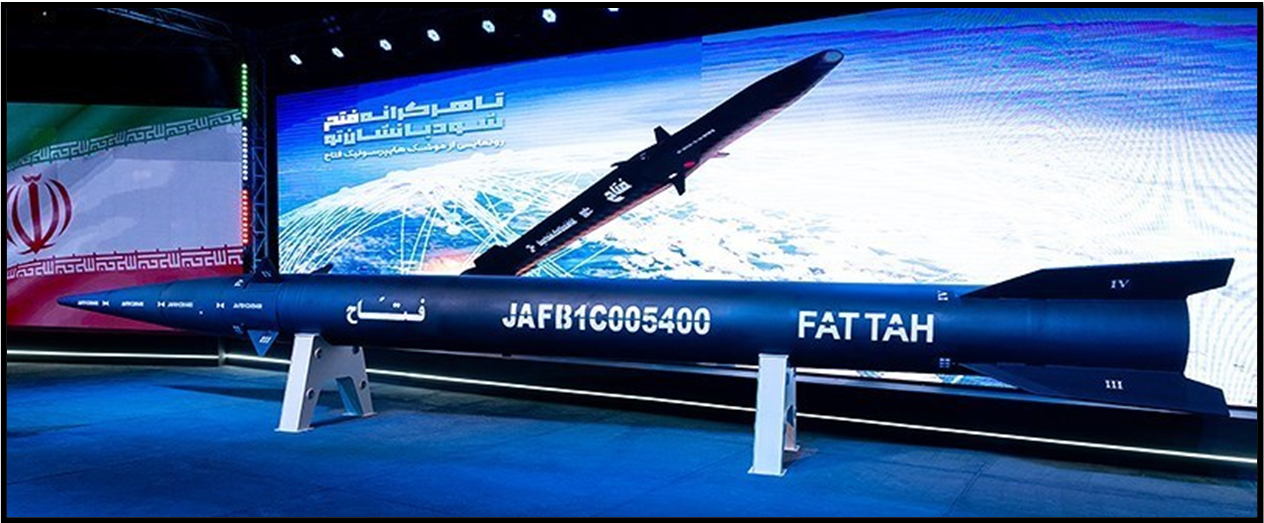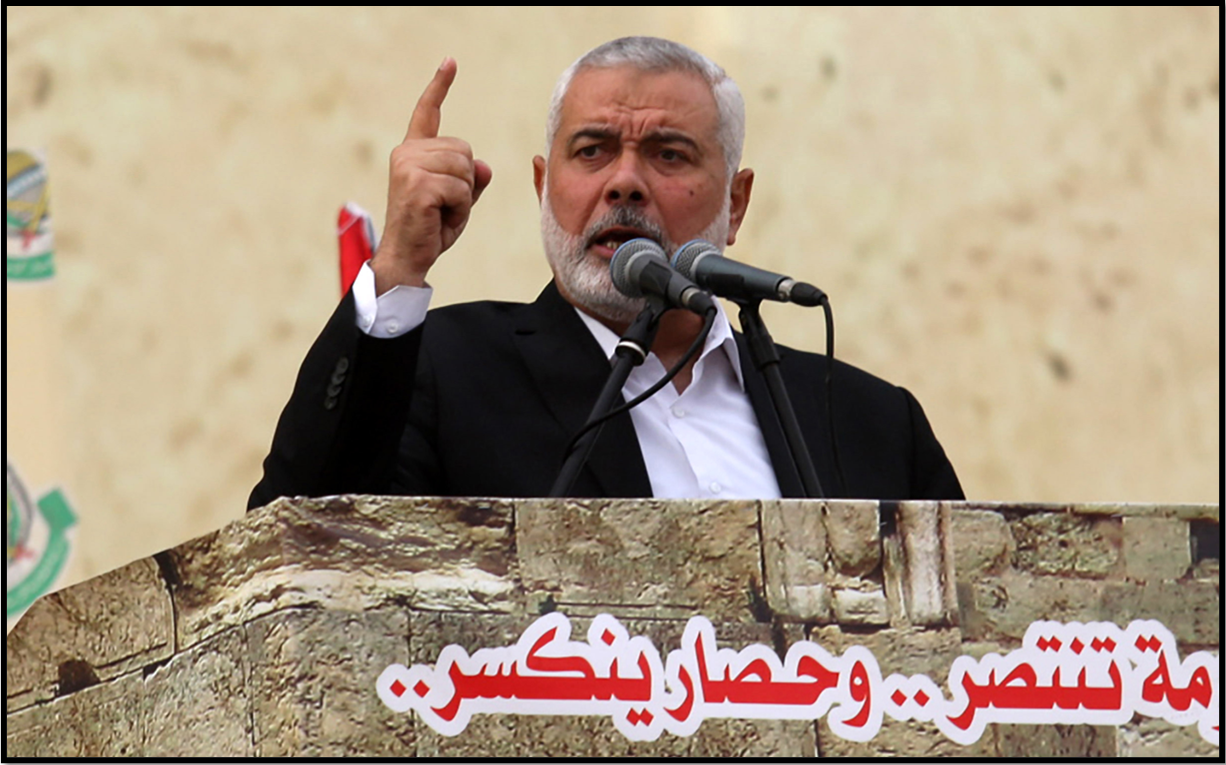Iran launched at least 180 ballistic missiles at Israel in a massive two-wave assault on Oct. 1, 2024. Millions of civilians sought protection in bomb shelters. The risk of a regional war mounted as Jerusalem pledged retaliation. Iran “made a big mistake – and it will pay for it,” warned Israeli Prime Minister Benjamin Netanyahu. “We will keep to the rule we have determined: Whoever attacks us – we attack them.” U.S. National Security Advisor Jake Sullivan said that there would be “severe consequences” for Iran’s “significant escalation.”
Iran’s second direct attack on Israel in five months was retaliation for Israel’s killing of three men:
- Ismail Haniyeh, the Hamas political chief who was killed on July 31 in Tehran
- Hassan Nasrallah, the Hezbollah leader who was killed on September 27 in Beirut
- Brig. Gen. Seyyed Abbas Nilforoushan, the Islamic Revolutionary Guard Corps (IRGC) commander who was killed in the same airstrike in Beirut

Iran said that it used four types of ballistic missiles, including the Emad and Ghadr as well as the newer and more advanced Kheibar Shekan and Fattah models. Most of the Iranian missiles were intercepted by Israeli forces or U.S. Navy destroyers or landed in open areas. Israel’s layered air defenses include the Arrow 2 and Arrow 3, which are designed to intercept ballistic missiles. Jordanian forces also downed missiles. Several missiles impacted in central and southern Israel but caused minimal damage. Two Israelis were lightly injured by shrapnel in Tel Aviv. But no Israeli fatalities were reported. One Palestinian civilian in the West Bank city of Jericho was killed.
Iran’s primary targets appeared to be the headquarters of the Mossad spy agency in Tel Aviv, Tel Nof Air base in central Israel, and Nevatim Air Base in the southern Negev Desert, which houses advanced F-35 warplanes. Iran said that Hatzerim Air Base in the Negev Desert was also a target. Some of the bases were hit, but no aircraft, munitions or critical infrastructure were damaged. The attack “appears to have been defeated and ineffective, and this is testament to Israeli military capability and U.S. military,” President Joe Biden told reporters on October 1.
But Iranian officials claimed that the attack, dubbed Operation True Promise 2, was a resounding success. The IRGC said that 90 percent of the missiles hit their targets. President Masoud Pezeshkian boasted that Israel’s air defenses were “more fragile than glass” and vowed a “more crushing response” to any retaliation. Iran’s mission to the United Nations said that the assault was a “legal, rational, and legitimate response” to what it labeled as “terrorist attacks” by Israel. Iranians gathered to show their support for the armed forces on October 1-2 in Tehran and in the provinces.
The attack, dubbed Operation True Promise 2, appeared to be Iran’s attempt to establish deterrence against Israeli attacks on its territory as well as its allies in the so-called “Axis of Resistance.” The death of Nasrallah following devastating strikes on Hezbollah commanders, weapons and infrastructure was a huge blow to Iran’s longstanding “forward defense” doctrine. For decades, the Islamic Republic has relied on its militia allies across the Middle East to pressure Israel and deter strikes on Iranian soil. Hezbollah — sitting on Israel’s northern border with an arsenal of rockets, missiles and drones — was the centerpiece of this strategy.
Operation True Promise 2 was a follow-on to Tehran’s April 13-14 unprecedented assault on Israel, Operation True Promise. The first attack was retaliation for Israel’s April 1 airstrike on Iran’s diplomatic mission in Damascus that killed three Revolutionary Guards generals as well as other military officials.
The October attack was approximately twice the size of the April assault in terms of scope, according to an initial Pentagon assessment. Iran also exclusively fired ballistic missiles, including advanced Fattah-1 and Kheibar Sheykan models, which can travel to Israel within 12 minutes and are difficult to intercept.

The April attack included a wider variety of weapons but was easier for Israel to repel. Iran launched 170 suicide drones, more than 120 ballistic missiles, including older types, and more than 30 cruise missiles. Israel reported that 99 percent of the weapons were shot down or intercepted before even reaching Israel, with help from U.S., Jordanian and other unnamed regional players. Cruise missiles, which take some two hours to reach Israel, and drones, which can take up to nine hours to reach Israel, are easier to shoot down and allow more time for defensive preparations.
Israel retaliated on April 19 with a strike that was calibrated to avoid further escalation but also send Iran a clear message. Israeli warplanes, from outside of Iranian airspace, reportedly fired three missiles at an air defense radar system, part of the security umbrella over the Natanz nuclear facility. Not only did the missiles damage the target, they went undetected.
Timeline of Escalation
July 31, 2024: Israel assassinated Ismail Haniyeh, the head of the Hamas political office and the chief negotiator on terms for a ceasefire and hostage release. He was based in Doha but died while visiting Iran for the inauguration of President Masoud Pezeshkian He was reportedly killed by a remote-detonated bomb smuggled into the Iranian compound before his visit.

Sept. 17, 2024: Israel allegedly triggered explosions on thousands of pagers used by Hezbollah fighters and followers. Devices detonated in Beirut, the eastern Bekaa Valley and southern Lebanon as well as in neighboring Syria. At least 12 people died and nearly 3,000 were injured.
Sept. 18, 2024: Israel allegedly triggered explosions on hundreds of walkie-talkies used by Hezbollah fighters and followers. The attack targeted Hezbollah in at least three strongholds—Beirut, the eastern Bekaa Valley and southern Lebanon. At least 25 people were killed and more than 600 were injured.
Sept. 27, 2024: Israel killed Hezbollah leader Hassan Nasrallah as well as Ali Karaki, the commander of the group’s southern front, and other senior commanders in an airstrike on Hezbollah’s underground headquarters in southern Beirut. Iran’s Maj. Gen. Abbas Nilforoushan, the deputy commander of IRGC operations, was also killed.
